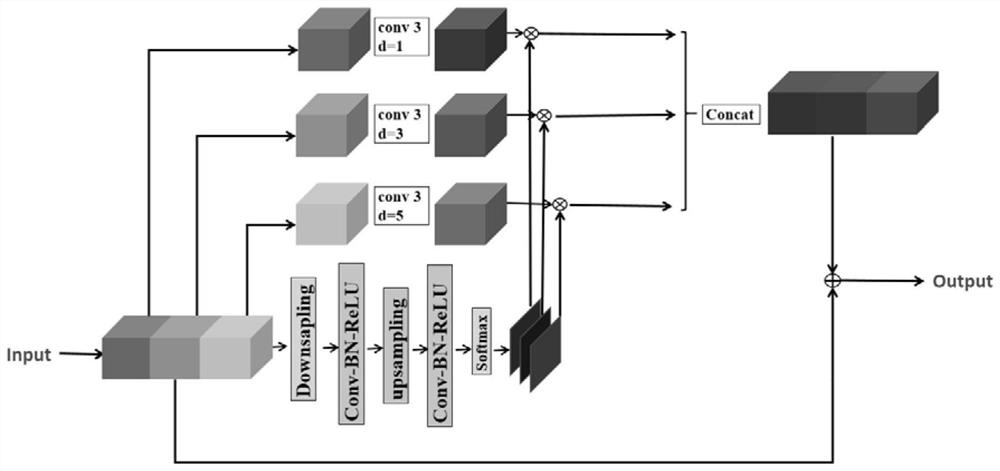A method for automatic choroidal segmentation of OCT images based on gcs-net
An automatic segmentation and choroid technology, applied in image analysis, image enhancement, image data processing, etc., can solve problems such as difficulties, single local information, complex detection, etc., and achieve the effect of enhancing consistency
- Summary
- Abstract
- Description
- Claims
- Application Information
AI Technical Summary
Problems solved by technology
Method used
Image
Examples
Embodiment
[0045] 1) Data preprocessing
[0046] The experimental data set is composed of large-field three-dimensional OCT images collected by a Topcon DRI-OCT scanner with a central wavelength of 1050 nm, and the scanning range includes the center of the macula and the optic nerve head (ONH) area. The image size is 512(B-scan width)×256(B-scan times)×992(B-scan depth), and the corresponding volume is 12×9×2.6mm 3 . The data set consists of 1650 gold-standard B-scan OCT images marked by professional doctors, of which 1150 are from 115 normal human eyes, 500 are from 50 highly myopic human eyes, and 10 evenly spaced B-scans are extracted from each human eye. Scan OCT images.
[0047] In the process of training and verification, in order to improve the computational efficiency of the model, the original OCT image with a size of 512 (B-scan width) × 992 (B-scan depth) was bilinearly interpolated and down-sampled to 256 (B-scan width) × 512 ( B scan depth), and randomly flip the image le...
PUM
 Login to View More
Login to View More Abstract
Description
Claims
Application Information
 Login to View More
Login to View More - R&D
- Intellectual Property
- Life Sciences
- Materials
- Tech Scout
- Unparalleled Data Quality
- Higher Quality Content
- 60% Fewer Hallucinations
Browse by: Latest US Patents, China's latest patents, Technical Efficacy Thesaurus, Application Domain, Technology Topic, Popular Technical Reports.
© 2025 PatSnap. All rights reserved.Legal|Privacy policy|Modern Slavery Act Transparency Statement|Sitemap|About US| Contact US: help@patsnap.com



